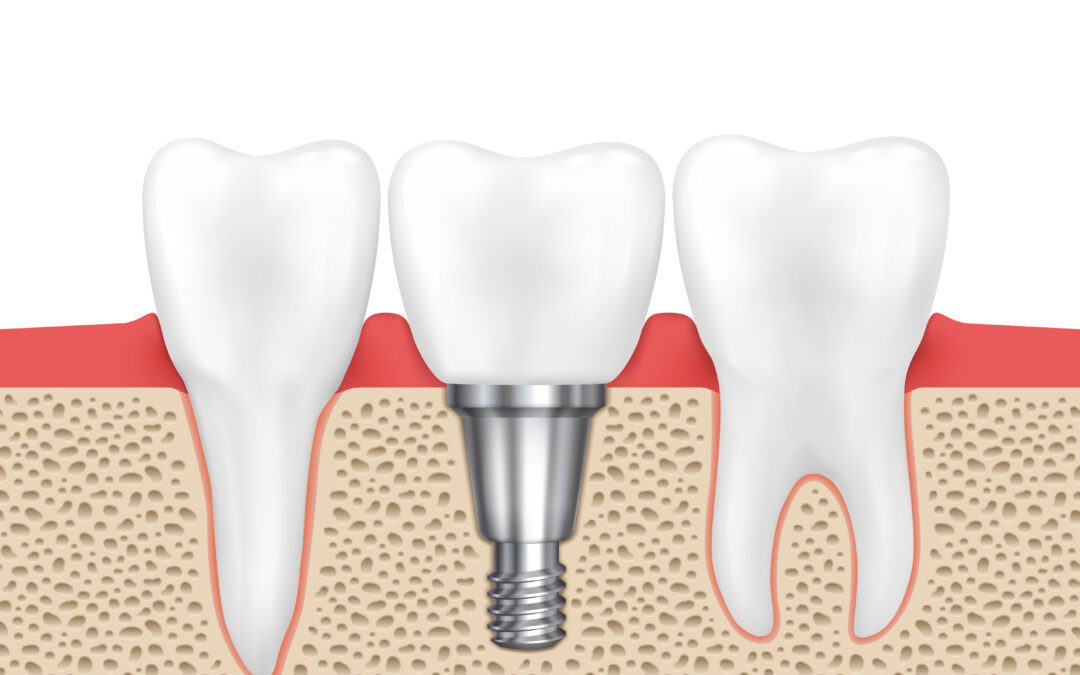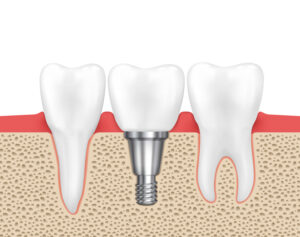
by Dr. Jacqueline S. Allen | Oct 31, 2016 | Blog, Dentistry
 Having dental insurance or a dental benefit plan can make affording needed dental care much easier. However, most dental benefit plans do not cover all necessary dental procedures. It is important for patients to understand their dental plans, and covered benefits are not designed around what treatment their dentist recommends or what services that specific patient needs. An individual’s coverage is based on how much their employer pays into the plan. When considering dental treatment, insurance coverage and dental benefits should not be the only consideration. Treatment should be determined by the patient, their dentist, and the patient’s specific dental needs.
Having dental insurance or a dental benefit plan can make affording needed dental care much easier. However, most dental benefit plans do not cover all necessary dental procedures. It is important for patients to understand their dental plans, and covered benefits are not designed around what treatment their dentist recommends or what services that specific patient needs. An individual’s coverage is based on how much their employer pays into the plan. When considering dental treatment, insurance coverage and dental benefits should not be the only consideration. Treatment should be determined by the patient, their dentist, and the patient’s specific dental needs.
How Dental Plans Work
Most commonly, dental plans are a contract between your employer and an insurance company. The chosen insurance company and employer agree on the amount your plan will pay and what procedures are covered. Often, you may have dental care needs not covered by your plan. Covered services are based on the dental plan you have.
Being a healthcare provider first and foremost, your dentist’s top priority is your oral health and aiding you in taking care of your teeth. Our office will file claims to your dental plan as a courtesy to you. The amount of the bill for whatever reason not covered by insurance is your responsibility.
To help you understand your coverage and benefits listed are some key terms used when discussing the features of a dental benefit plan.
Annual Maximums
This is the largest dollar amount a dental plan will pay during the year. You are expected to pay any costs higher than the annual maximum as well as any copayments. Most dental plans run on a calendar year (Jan-December) and benefits renew January 1st. However some plans run on a benefit year and the dates of benefit renewal vary. It is important to check with your insurance company to see when your benefits renew. It is also important to know that annual maximums are not always updated to keep up with costs of dental treatment. If you feel your annual maximum is too low please consult your employer and or dental insurance company.
UCR (Usual, Customary, and Reasonable) Charges
UCRs are the maximum allowable amount that will be covered by your plan for a specific service/s. The term UCR makes it sound as if this is the standard rate for dental care, however it is not and the use of these terms can be very misleading. First, insurance companies determine the charges for UCR’s and can pick whatever amount they want. The amount they choose often does not coincide with what actual dentists in the area charge for specific procedures. Secondly, UCR rates may stay the same for years, meaning they do not have to keep up with things like inflation or be reflective of actual costs of dental treatment. Lastly, insurance companies do not have to explain how they set their UCRs and the formula used by each company varies. If your bill is larger than the UCR set by your insurance plan it does not mean your provider has overcharged you.
Preferred Providers
Your insurance plan may want you to seek treatment from a provider in its preferred network. The term preferred means these dentists are contracted with the insurance plan. It does not mean these are providers the patient prefers.
Pre-Existing Condition
Some dental plans do not cover conditions that existed prior to the patient being enrolled. For example, your insurance may not cover benefits for replacing a missing tooth if the tooth was gone before the effective coverage date. Despite your plan not paying for specific conditions, you may still need treatment to maintain optimum oral health.
Unfortunately many patients make decisions about their dental care solely based on their insurance coverage. When making decisions about your dental care it is crucial to remember your health is priority number one. Work with your dentist so your teeth with last a lifetime.
Two of the most common misassumptions by patients is first, that their dental insurance covers all dental procedures (codes) and secondly that their dental plan will cover the entire cost of a specific procedure or treatment.

by Dr. Jacqueline S. Allen | Oct 24, 2016 | Blog, Dental Implants, Endodontics, Root Canal
 Dental implants have been offered in recent years as a panacea for fixing the problem of ailing teeth. However, the reality when it comes to treating a badly injured or infected tooth is more complex. Both endodontic procedures such as root canals and dental implants have their proper place – your dental care team can help determine what treatment will be most effective for you.
Dental implants have been offered in recent years as a panacea for fixing the problem of ailing teeth. However, the reality when it comes to treating a badly injured or infected tooth is more complex. Both endodontic procedures such as root canals and dental implants have their proper place – your dental care team can help determine what treatment will be most effective for you.
Here are four common myths related to dental implants, and the factual situation in each case.
Myths related to dental implants and root canal treatments
Myth #1: The best thing to do in all cases with an injured or infected tooth is to replace it with a dental implant.
There are a range of factors that will determine if a dental implant or a root canal is the best way to proceed. Although dental implants would appear at first glance to permanently resolve the issue with a troubled tooth, they can also cost more and require more visits to the dentist to complete. Most root canal treatments, which remove inflamed pulp and clean, fill and seal the inside of the tooth, can be accomplished in a single visit and are virtually painless.
Myth #2: Dental implants have a higher success rate than root canals.
A number of studies have shown both dental implants and root canals can have success rates of more than 95 percent. Currently, both procedures are considered excellent choices for treating an ailing tooth, and decisions to go with one procedure over the other should be based on factors related to an individual’s unique situation.
Myth #3: If you have a root canal and it fails, you need to have an extraction done and a dental implant placed.
Not necessarily. Root canals can fail for reasons that include damage to the crown protecting the treated tooth, additional tooth decay, or hidden canals that were not properly cleaned and filled the first time. However, endodontic retreatments of root canals can successfully restore the natural tooth to health in as many as 75% – 88% of all cases.
Myth #4: Your endodontist can’t help you if you need an implant.
Actually, the American Association of Endodontists has released a position statement affirming that if a endodontist determines a tooth must be extracted and a dental implant placed, he or she may proceed with the extraction and the placement of the implant if it is in the best interest of the patient.
“The decision whether to save a natural tooth or to proceed with an extraction and dental implant can be a difficult one,” says Dr. Jacqueline S. Allen, who practices with the Phoenix Endodontic Group. “Your endodontist can help you sort through your options and make the best decision for your individual health needs.”

by Dr. Jacqueline S. Allen | Oct 17, 2016 | Blog, Endodontics, Phoenix Endodontic Group
 At Phoenix Endodontic Group, we believe our staff is what makes our practice so successful! As part of our employee spotlight series, this month, we are highlighting Dallas Clary, one of our dental assistants! With over 17 years of experience in dentistry, she loves to disprove the negative reputation and impressions of endodontics and root canal procedures many patients have prior to treatment. Read on to learn more about Dallas!
At Phoenix Endodontic Group, we believe our staff is what makes our practice so successful! As part of our employee spotlight series, this month, we are highlighting Dallas Clary, one of our dental assistants! With over 17 years of experience in dentistry, she loves to disprove the negative reputation and impressions of endodontics and root canal procedures many patients have prior to treatment. Read on to learn more about Dallas!
Q: Tell us a little bit about yourself—where are you from? What hobbies do you enjoy?
A: I grew up in Eagar, AZ. I got my dental assisting degree from White Mountain School of Dental Assisting in Linden, AZ. As for hobbies, I love crafting, and Pinterest definitely inspires me!
Q: Did you always want to work in the dental industry? How did you end up at Phoenix Endo?
A: My mother worked in a dental office when I was growing up, so I guess I followed in her footsteps. Since I’ve worked in the endodontic industry for so long, I looked for an office closer to home, and fortunately, Phoenix Endo was looking for a dental assistant.
Q: What is your favorite part of working at Phoenix Endo?
A: I love helping patients have a comfortable and enjoyable experience during a root canal. It gives me great satisfaction to disprove the bad reputation that root canals have been given. Since they relieve the patient of pain, root canals shouldn’t be thought of negatively.
Q: What do you admire most about Dr. Allen?
A: Dr. Allen is so generous and truly cares for her patients and those in need. She spends tireless hours in and out of the office providing treatment to people.
Q: What are the most rewarding aspects of working at Phoenix Endo?
A: We have great doctors and a great team! We all work very hard to make sure that our patients have a great experience, despite the fact that they are having root canal treatment.
Tune in next month for to get to know another member of our team!

by Dr. Jacqueline S. Allen | Oct 12, 2016 | Blog, Endodontics, Root Canal
 Endodontically treated teeth can last a lifetime. Some of these teeth, however, may not heal properly or may develop new problems months, or even years, after they were initially treated. An additional endodontic treatment, called a retreatment (a second root canal procedure), can be performed, which could again, allow a patient to keep his or her tooth for a lifetime.
Endodontically treated teeth can last a lifetime. Some of these teeth, however, may not heal properly or may develop new problems months, or even years, after they were initially treated. An additional endodontic treatment, called a retreatment (a second root canal procedure), can be performed, which could again, allow a patient to keep his or her tooth for a lifetime.
Root canal treatment is like any other medical or dental procedure. It may not heal or respond to treatment, as expected for many different reasons:
- Often times, the permanent or temporary restoration may not have prevented salivary contamination inside the tooth.
- There may have been an extended period of time between when the crown or other restoration was placed, and when the root canal treatment was completed. Most endodontists and studies agree that a definitive restoration should be placed within one month following an endodontic procedure.
- There may be canals that were undetected, or canals that were too narrow, or calcified, to negotiate for the original practitioner.
There are occasions when a new problem arises with a tooth that has been treated previously that may compromise the original endodontic procedure:
- If a tooth develops a vertical fracture after endodontic therapy, it is no longer a viable tooth to keep in the oral cavity.
- A new cavity could develop in the tooth and expose the root canal to recontamination with bacteria.
- The restoration that was placed in or on the tooth after the endodontic treatment was complete can break down, creating microleakage of bacteria into the canals, which can cause recontamination.
Before endodontic retreatment is started, the endodontist may want to take a CBCT of the tooth. A CBCT is a 3-dimensional X-ray that allows the endodontist to look at the tooth in all planes to help diagnose a pattern of bone loss that may be indicative of a vertical fracture, canal anatomy that may not have been addressed in the original endodontic therapy, and other factors that will help your endodontist determine the best treatment for the tooth.
Even though a CBCT may offer more information about why a retreatment may be necessary, sometimes the endodontist must go back into the tooth and look for a potential cause that prevented the original root canal from healing.
A retreatment procedure consists of removal of the original contents of the crown and canals and exploration of the tooth and internal root structure that remains. If any canals were missed, they are addressed at that time. If a fracture exists, then the tooth will ultimately need an extraction, and may be removed at that time or may be removed at some point in the future by another practitioner. Once these issues are addressed, and once the canals are free of their filling material, they are disinfected, and an antibacterial paste is placed in each of them. This paste may be left in the tooth for several weeks until the tooth is symptom-free, and all other clinical signs of infection have disappeared. At that point, the patient returns, and the root canals would once again be filled with the endodontic filling material and a restoration crown would top the tooth. Most endodontists will evaluate the tooth for proper healing for several years after a retreatment is performed.
Although the goal of primary endodontic therapy is to save the natural tooth for a lifetime, there may be factors that can affect that overall outcome. When this happens, other treatments can save a natural tooth for a lifetime.

by Dr. Jacqueline S. Allen | Oct 3, 2016 | Apicoectomy, Blog, Root Canal
 Even though contemporary root canal procedures have very high success rates, not every root canal treatment is permanently effective. Tooth root systems can be complex, and undiscovered and untreated canals can harbor infections that threaten the pulp of a tooth months, or even years, after the initial procedure.
Even though contemporary root canal procedures have very high success rates, not every root canal treatment is permanently effective. Tooth root systems can be complex, and undiscovered and untreated canals can harbor infections that threaten the pulp of a tooth months, or even years, after the initial procedure.
If you’re experiencing pain and swelling around a tooth that’s received a root canal, visit your dentist or endodontist to have it examined. He or she may suggest that an endodontist perform an apicoectomy, which treats an infected tooth from its root end, rather than from the biting surface of the tooth.
Here’s a brief guide to how an apicoectomy can save a natural tooth that’s already received a root canal treatment.
Apicoectomy: A Step Beyond Root Canal Treatment
- Apicoectomies can be useful when a root canal retreatment won’t work. If the tooth has received a crown as part of its root canal process, or is part of a fixed dental bridge, those restorations will have to be disassembled and replaced to do another root canal. Accessing the infection through the root avoids this.
- An apicoectomy removes and seals the tip of the tooth root. During an apicoectomy, the endodontist will cut and lift the gum away from the tooth so the root is easily accessible. The infected tissue will be removed, along with the last few millimeters of the root tip. Then the endodontist cleans and seals the end of that root, removing a critical avenue where infection can manifest and cause problems.
- The preparation for an apicoectomy gives the endodontist an accurate picture of your natural tooth. Endodontists use state-of-the-art technology to perform apicoectomies, including fiber optic lights, operating microscopes and ultrasonic cleaning instruments that remove infection via high frequency vibration. Between this and the imaging technologies employed before the procedure, your endodontist will have an exceptionally clear picture of the health of your tooth, and what can be done to preserve it.
“If an infection threatens a tooth that’s had a root canal, and a retreatment isn’t an option, an apicoectomy can preserve it and keep it useful and functional for years to come,” says Dr. Allen of the Phoenix Endodontic Group.

 Having dental insurance or a dental benefit plan can make affording needed dental care much easier. However, most dental benefit plans do not cover all necessary dental procedures. It is important for patients to understand their dental plans, and covered benefits are not designed around what treatment their dentist recommends or what services that specific patient needs. An individual’s coverage is based on how much their employer pays into the plan. When considering dental treatment, insurance coverage and dental benefits should not be the only consideration. Treatment should be determined by the patient, their dentist, and the patient’s specific dental needs.
Having dental insurance or a dental benefit plan can make affording needed dental care much easier. However, most dental benefit plans do not cover all necessary dental procedures. It is important for patients to understand their dental plans, and covered benefits are not designed around what treatment their dentist recommends or what services that specific patient needs. An individual’s coverage is based on how much their employer pays into the plan. When considering dental treatment, insurance coverage and dental benefits should not be the only consideration. Treatment should be determined by the patient, their dentist, and the patient’s specific dental needs.

 Dental implants have been offered in recent years as a panacea for fixing the problem of ailing teeth. However, the reality when it comes to treating a badly injured or infected tooth is more complex. Both endodontic procedures such as root canals and dental implants have their proper place – your dental care team can help determine what treatment will be most effective for you.
Dental implants have been offered in recent years as a panacea for fixing the problem of ailing teeth. However, the reality when it comes to treating a badly injured or infected tooth is more complex. Both endodontic procedures such as root canals and dental implants have their proper place – your dental care team can help determine what treatment will be most effective for you.
 At Phoenix Endodontic Group, we believe our staff is what makes our practice so successful! As part of our employee spotlight series, this month, we are highlighting Dallas Clary, one of our dental assistants! With over 17 years of experience in dentistry, she loves to disprove the negative reputation and impressions of endodontics and root canal procedures many patients have prior to treatment. Read on to learn more about Dallas!
At Phoenix Endodontic Group, we believe our staff is what makes our practice so successful! As part of our employee spotlight series, this month, we are highlighting Dallas Clary, one of our dental assistants! With over 17 years of experience in dentistry, she loves to disprove the negative reputation and impressions of endodontics and root canal procedures many patients have prior to treatment. Read on to learn more about Dallas!
 Endodontically treated teeth can last a lifetime. Some of these teeth, however, may not heal properly or may develop new problems months, or even years, after they were initially treated. An additional endodontic treatment, called a retreatment (a second root canal procedure), can be performed, which could again, allow a patient to keep his or her tooth for a lifetime.
Endodontically treated teeth can last a lifetime. Some of these teeth, however, may not heal properly or may develop new problems months, or even years, after they were initially treated. An additional endodontic treatment, called a retreatment (a second root canal procedure), can be performed, which could again, allow a patient to keep his or her tooth for a lifetime.
 Even though contemporary root canal procedures have
Even though contemporary root canal procedures have